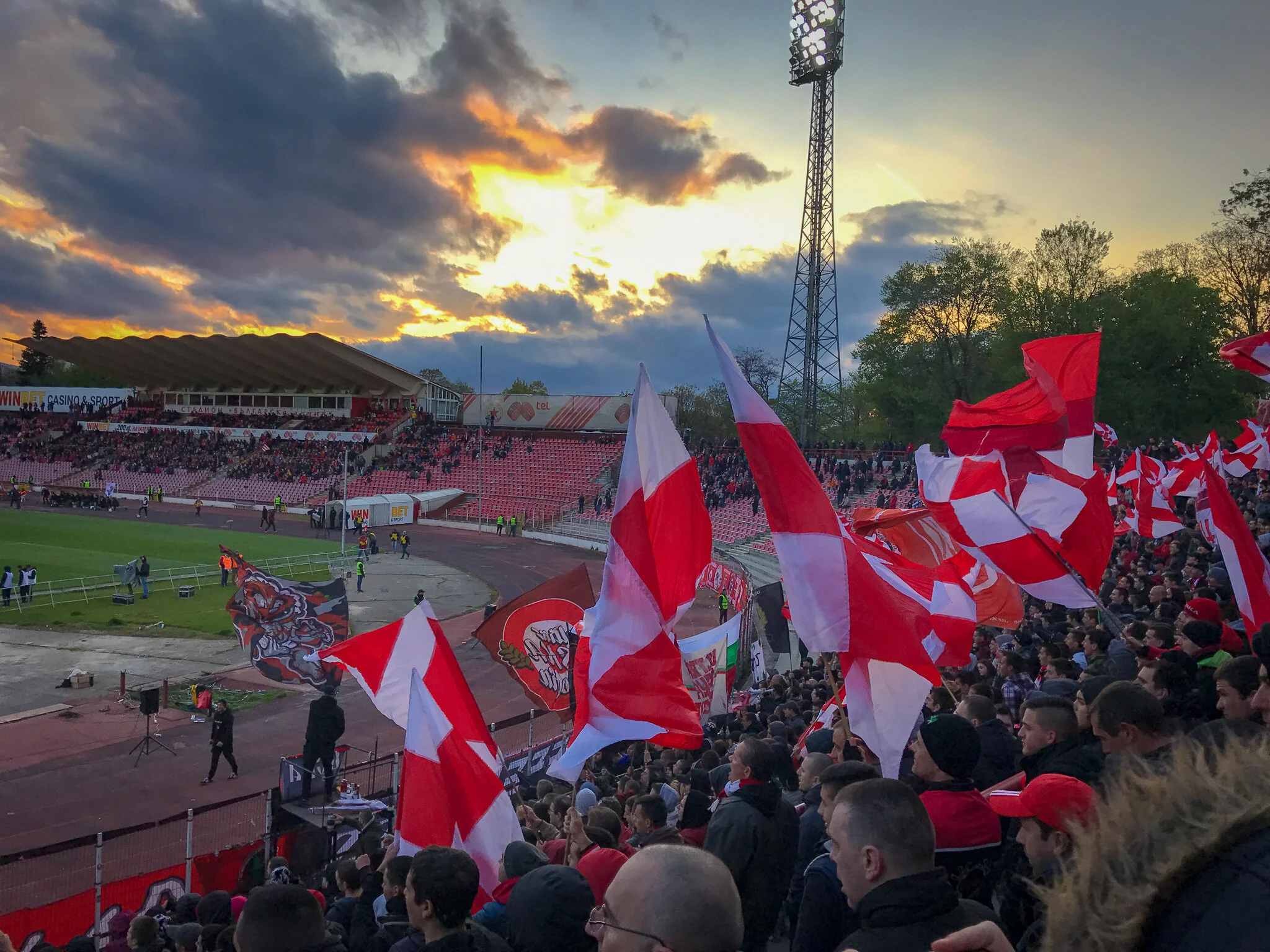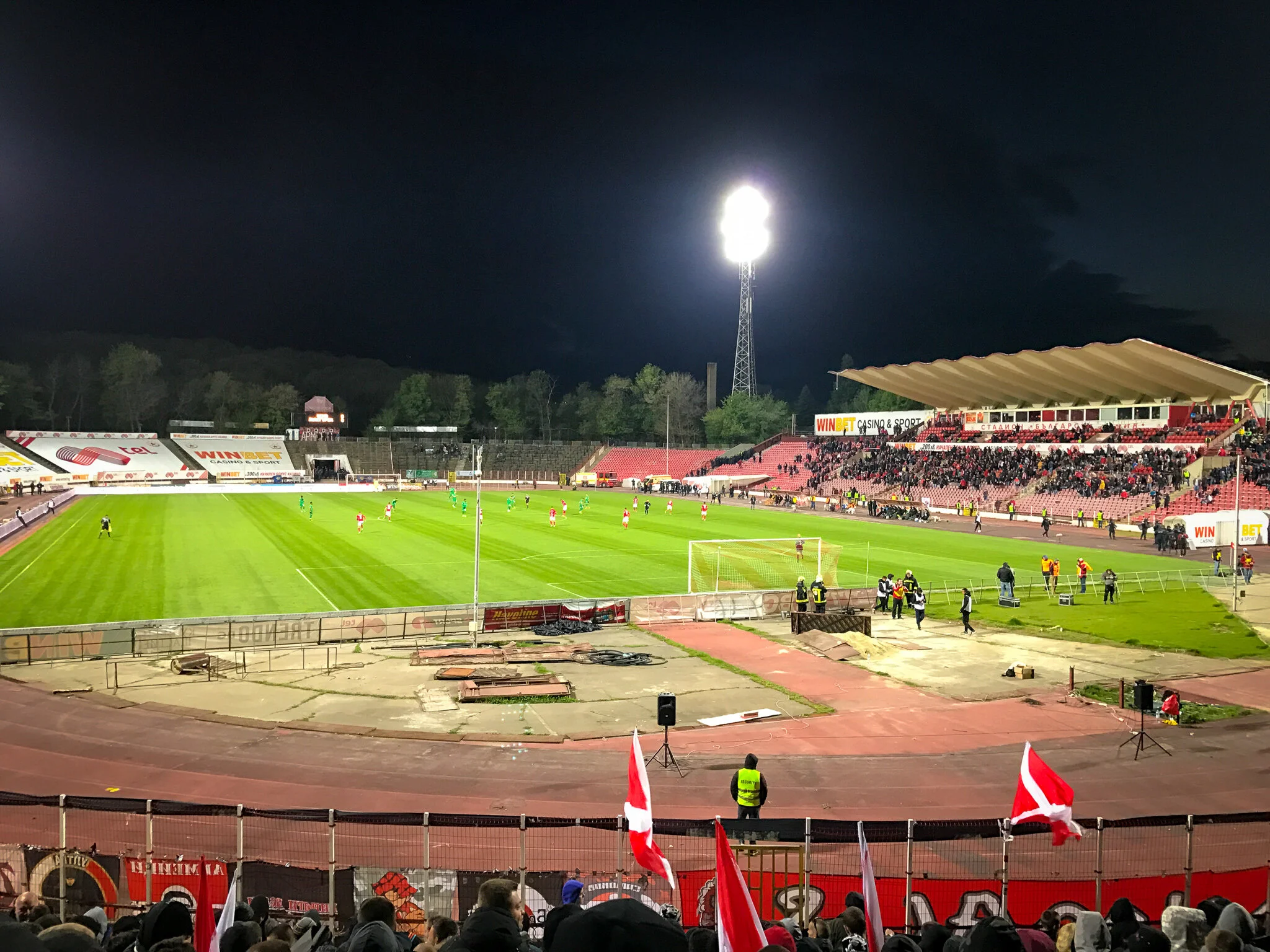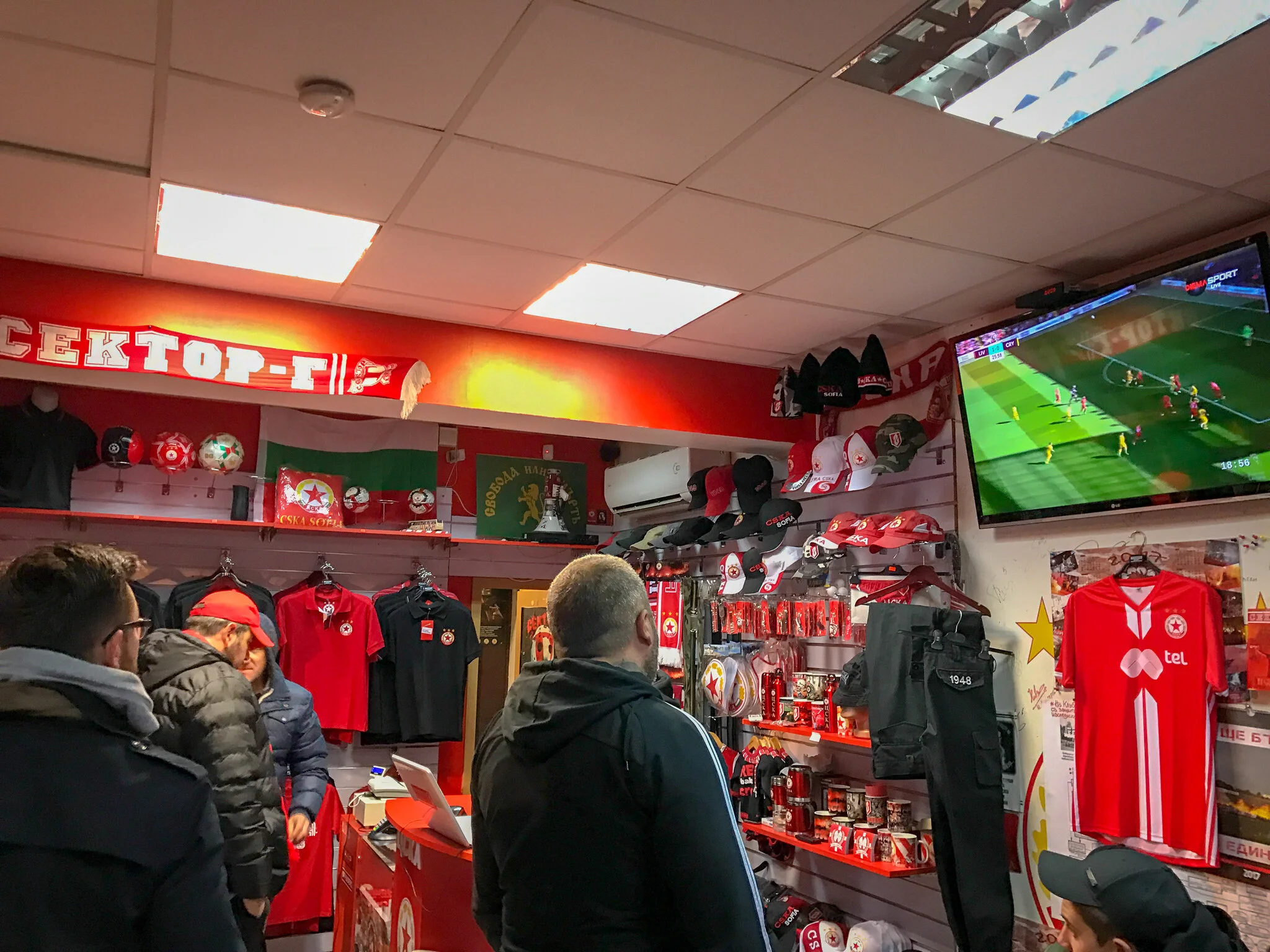Stadium Guide: Balgarska Armia Stadium, CSKA Sofia
/If you want to sit with the die-hard fans at a CSKA Sofia game, make sure you get tickets for Sector G.
Balgarska Armia Stadium (Bulgarian Army Stadium)
Opened: 1967 | Tenant(s): CSKA Sofia | Capacity: 22,995
History
CSKA Sofia take on Ludogorets Razgrad on 23 April 2017. The game ended 1-1.
The Balgarska Armia Stadium, or the Bulgarian Army Stadium, is the home of CSKA Sofia and has been for over 50 years. Located inside Park Borisova Gradinia, the stadium’s construction started in 1965 with the ground opening two years later, replacing the venue which originally stood on that patch called Athletic Park.
In 2000, the stadium underwent one of its biggest renovations to date as it was equipped with a new Dynacord surround sound system and a next-generation lighting system. In early 2009, the then-new owners of the club announced an ambitious project for a new stadium in place of the current one, which would be demolished. However, construction did not commence as negotiations between the club and the Ministry of Sport fell through, leading to the owners reconstructing parts of the current stadium in order to meet the criteria for their Bulgarian A Football Group licence.
Who are CSKA Sofia?
The Bulgarian Army Stadium is in a leafy part of Sofia known as Boris’ Garden.
CSKA Sofia are the most decorated club in Bulgarian football history, with a record 31 Bulgarian A Group titles and 20 Bulgarian Cup wins to their name. They are historically a branch of the Central Sports Club of the Army (CSKA), which includes teams in basketball and athletics, amongst other sports, although the sports club’s departments have been autonomous and separated from the national organisation since 1992.
The team was founded in 1948 as Septemvri pri CSV after the unification of two sports clubs from cities Chavdar and Septemrvi, clinching their first league title that same year, and has changed its name on several occasions before deciding on CSKA Sofia in 1989. In their formative years they were a dominant force, winning the league on eight occasions throughout the 1950s and adding a further 22 since, with the most recent coming in 2008.
Although they don’t have a European trophy to their name, CSKA have had some notable performances at a continental level, reaching the semi-final of the European Cup on two occasions, in 1967 and 1982, as well as the semi-final of the European Cup Winners’ Cup in 1989.
Their most famous, and arguably best-ever, player to pull on the CSKA jersey is Bulgarian legend Hristo Stoickhov. The iconic player made his name at CSKA where he played between 1984 and 1990, winning the European Golden Boot during the 1989-90 season with 38 goals in 30 matches, before moving to Barcelona and becoming part of a team that won five La Liga titles, a European Cup and a Cup Winners’ Cup. He has since managed CSKA and has a 20% shareholding in the club. Other notable players include Dimitar Berbatov, Martin Petrov and Stiliyan Petrov.
In more recent times the club have endured struggles, suffering relegation to the Bulgarian third division in 2015 due to financial troubles leading to the refusal of an A Group licence for the 2015-16 season. That season, and as amateurs, they became the first-ever third division club to win the Bulgarian Cup, as well as promotion straight back to the top tier by obtaining Litex Lovech’s professional licence.
The club also share a massive rivalry with Levski Sofia, with whom they contest the Eternal Derby of Bulgaria.
Getting to Sofia
Sofia International Airport on a sunny spring day.
The two-terminal Sofia International Airport is the main point of entry for visitors to Bulgaria. Ryanair operate flights to and Sofia from several destinations across Europe, while Wizz Air and easyJet also have budget services to the Bulgarian capital. Sofia is well served by several airlines, and cheap flights throughout the year are readily available. Click to find out how to get from Sofia Airport to Sofia.
Sofia’s Central Railway Station is the largest one in the country and is the terminus for people travelling to Sofia by train. It is located one kilometre north of the city centre and its close proximity to the Central Bus Station makes it easy to get anywhere in Sofia or its surrounding areas. As well as serving routes to all major destinations directly, direct services operate to Belgrade, Bucharest, Istanbul, Lviv, Niš, Szeged and Thessaloniki.
Getting to Balgarska Armia Stadium (Bulgarian Army Stadium)
Two CSKA Sofia fans make their way past riot fans as they walk through Boris’ Garden.
The stadium is located in the south east of the city within Park Borisova Gradinia, which it shares with the Vasil Levski National Stadium, and is approximately a 30-minute walk from the city centre.
It is also served by the Vasil Levski Stadium Metro station, which is on both the M1 and M2 lines and sits at the corner of the park, just a brief walk from Balgarska Armia.
Tours and merchandise
CSKA have a store at the stadium that opens on matchdays, with a great variety of merchandise on offer.
Although there are no guided tours of the Balgarska Armia Stadium, there is the CSKA Museum of Sport Glory, which houses a collection of over 1,000 trophies won throughout the club’s history from various sports, as well as its impressive roll of honour.
But while there isn’t an official CSKA shop in the city centre, there are plenty of unofficial sports and souvenir outlets which sell memorabilia including scarves and shirts dotted throughout, in addition to an online shop for official club merchandise.
Matchday experience
The CSKA Sofia fans created the best atmosphere I have ever been a part of.
CSKA Sofia fans are notorious for their raucous behaviour and elaborate displays including flags, banners and pyrotechnics. The most ardent supporters, also known as the ultras, occupy the standing area in Sector G of the North Stand, while everywhere else, aside from a small section of the South Stand, has seating.
The matchday experience at the Balgarska Armia Stadium is everything you would expect an eastern European football game to be – intimidating, loud and without much regard for health and safety regulations. But it is an incredible day out, and the energy and atmosphere that CSKA fans generate is far superior to anything you’d find in western Europe. It was the best crowd I’ve ever been a part of, and I couldn’t recommend it enough.
Unsurprisingly, alcohol isn’t sold or permitted inside the ground, although a lot of people smoke, but there are a limited selection of refreshments on offer including water and whole peanuts. There are various stalls outside of the ground that sell beverages, food and merchandise.
Tickets
Tickets to see CSKA Sofia are insanely cheap!
CSKA Sofia rarely sell out home games and tickets are readily available at their box office on the day of the game. Tickets are also extremely cheap and cost as little as five Bulgarian Lev apiece, which is equal to roughly £2.40.
Just to note, derbies against Levski Sofia and European games are not held at Balgarska Armia Stadium as it is not suitable for high profile fixtures. Those matches take place at the nearby Vasil Levski National Stadium which is the home of the Bulgarian national football team.
Safety
Although there are some apparent dangers, keep yourself to yourself and you will have an enjoyable experience.
If the health and safety of supporters is of paramount concern, then the club and its officials have a funny way of showing it. Riot police control the perimeter of the ground and line the players’ tunnel, while a fire engine is on hand inside the ground should anything go wrong with flares and/or smoke bombs. I even saw someone getting beaten up at the back of the stand, but I got the feeling it was part of an ongoing argument.
If you’re going to a CSKA game, make sure to keep yourself to yourself. Picture taking is fine and didn’t appear to be frowned upon, and we enjoyed our time in with the ultras. But if you think that it might not be your thing, then it is probably best to get a ticket in an area with seating.
























Here's the information you need to know if you plan on watching Wisla Krakow at Stadion Miejski.